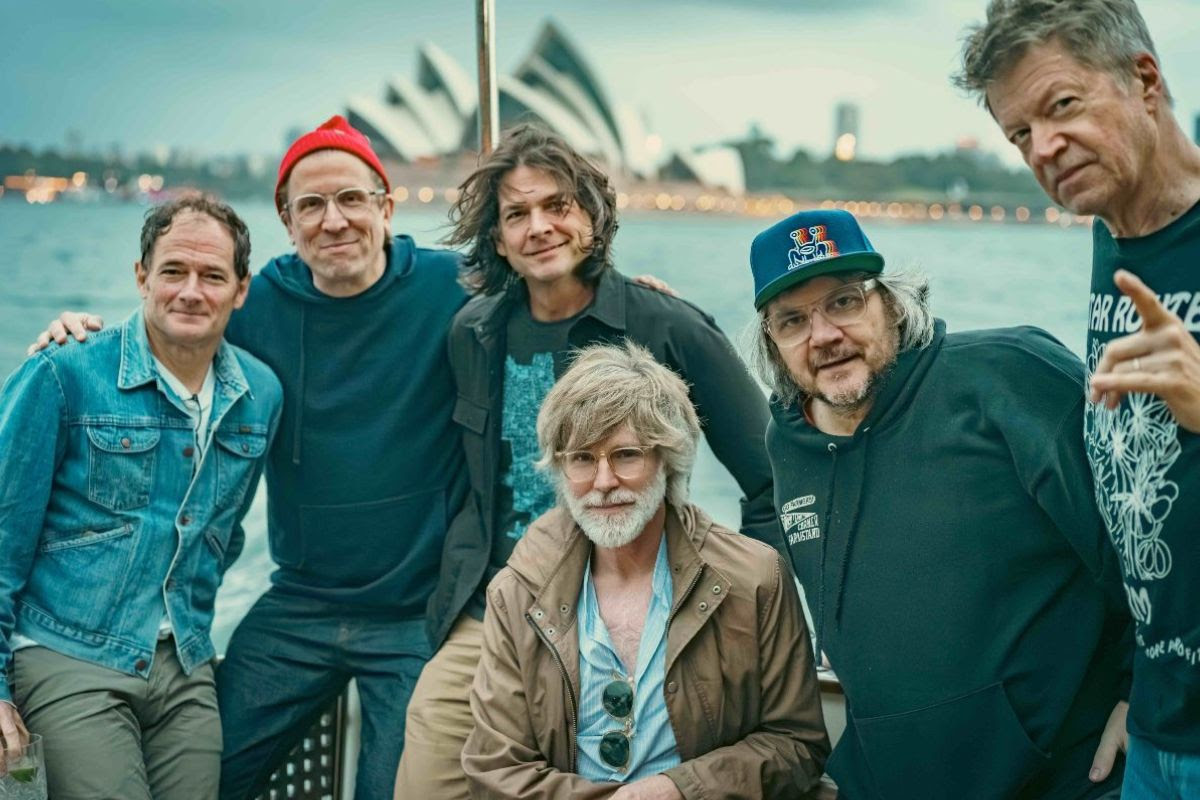What classic album dropped the year you were born?

Exile on Main St., The Rolling Stones (1972)
My favorite release of 1972 was dropped on March 21 of that year, nine wailing, placenta-sealed pounds, gruntingly pressed in a limited edition of one. My second favorite release is arguably Exile on Main St. The Stones’ double LP is mired in as much pharmacological lore as it is filled with viscerally great music, the bulk of which was recorded in the dank basement of a mansion in France—the same country where the band had relocated as tax “exiles.” Weirdly panned by most critics upon its release, the album had a single hit with “Tumbling Dice,” yet Exile remains a greasy grimoire of definitive Stones swagger. From “Loving Cup” and “Let it Loose” to “Happy” and “Ventilator Blues,” the Stones and a roster of notable, equally stoned guest players created a monolith of raw and emotional music that inspired everyone from Pussy Galore and Liz Phair, and in the process making “Felony Possession of Keith Richards” a 12-step recovery bon mot.–Daniel A. Brown
Kaya, Bob Marley and The Wailers (1978)
Kaya was The Wailers’ tenth studio album, and the second released after an assassination attempt forced the entire band’s “Exodus” to London. The word corresponds to locations in Turkey, Sudan, Japan, Kenya, India and Burkina Faso. It’s also slang for cannabis, which you can practically smell through the speakers, especially on the title track. Almost every song is a classic in the Marley canon: “Easy Skanking”; “Running Away”; “Misty Morning”; “Sun Is Shining”; “Satisfy My Soul”; “Time Will Tell”. “Is This Love” might be their greatest single recording. 1978 was a big year for the band: the One Love Peace Concert brought them back home to Jamaica in April; the “Babylon By Bus” live album was released in November; and former founding member Peter Tosh dropped his own (excellent) third album, “Bush Doctor” that December. “Kaya” has always been my favorite Marley album, and I was 37 days old when it was released. I never knew that until just a few minutes ago.–Shelton Hull
Tim, The Replacements (1985)
It was in 1985 that educator Neil Postman first argued that, as a society, we were “amusing ourselves to death.” It’s quaint to think that, the year I was born––before iPhones and social media, before Netflix and music streaming––the world was already oppressed by its addiction to entertainment. It was among that cultural milieu that I arrived in this world. As did The Replacements major label debut: Tim. Even for ardent fans of The Replacements (count me among the flock), the group’s records can be maddeningly uneven; 1984’s Let It Be, for example, includes both the sensitive ballad “Androgynous” and puerile filler like “Gary’s Got a Boner”). Featuring the power pop tune “Hold My Life,” a very Elvis-Costello-ish “Waitress in the Sky,” the Orbison-esque lament “Swingin’ Party” and the now-ubiquitous college-radio call to arms “Left of the Dial,” Tim is certainly varied, but not offensively so. Still, The Replacements’ records often seemed like they were made for the amusement of the band. And like everything the Replacements did, Tim enthused rock critics, confused label executives, and fell mostly on the deaf ears of music consumers who seemed increasingly less entertained by music made by guitar-wielding groups of complex sadsacks. Indeed when the band was invited to perform on Saturday Night Live the following year, no one was entertained––except for the band, all of whom were extremely inebriated. Known as “the greatest band that never was” The Replacements may have amused themselves to death, as less than a year after Tim, the original lineup was no more, and the band officially called it quits in 1991.–Matthew Shaw
Blackheart Man, Bunny Wailer (1976)
I’m a bicentennial baby. That’s the nickname for those of us who debuted in 1976. That same year, Bunny Wailer released his solo debut Blackheart Man on Island Records. Written almost entirely by Wailer, the album delivered iconic hits like “Fighting Against Conviction” and “Rastaman”, and defined roots reggae on an international level. It also brought Wailer out of the shadow of his ultra-successful former bandmate, Robert Nesta Marley. Fun fact: Wailer’s band on Blackheart was made up almost entirely of members of the original Wailers, save the aforementioned Marley; even Peter Tosh took part.–Josué A. Cruz
Goo, Sonic Youth (1990)
Goo is the sixth studio album from Sonic Youth and, for many early fans of the band, a treasonous effort that marked them as “total sellouts.” Goo is certainly more accessible than some of Sonic Youth’s earlier records in the way that it embraces various pop-sensible forms and distances the band from the sheer noise and feedback of the group’s earlier works. I think it’s funny to imagine a record that sounds like this (listen above) could ever be considered as a departure toward the mainstream. It’s pre-grunge, post-noise, esoteric-pop-guitar music that subverts whatever classic rock n’ roll notions were still buzzing about during the late ‘80s, and yet it still defies genre convention. I think Sonic Youth are to the ‘90s what The Velvet Underground were to the ‘60s.–Glenn Michael Van Dyke
I Am, Earth, Wind & Fire (1979)
In middle school I used to listen to the Florida A&M University Marching 100 play Earth, Wind & Fire’s “In The Stone” at football games. Fairly new to the alto saxophone, the song helped me appreciate my instrument. To this day, I love big horns, jazzy saxophone runs, and rhythmic drum cadences––thanks largely to the music of Earth, Wind & Fire. Cuts from 1979’s I Am, like “Boogie Wonderland” and “After the Love Has Gone” were my Saturday soundtracks while cleaning the house, or running errands with my mother. In the ‘90s, I took great pride in performing “Rock That!” in my high school band (Jean Ribault Senior High, Go Trojans!). I Am also marks a highpoint in the fusion of jazz, contemporary rhythm and blues, disco and funk. As a hip-hop fan (and artist), it’s essential listening.–Al Pete
3 Feet High and Rising, De La Soul (1989)

De La Soul were the original cool kids, turning hip-hop toward a more positive and comedic direction. The cover of 1989’s 3 Feet High and Rising was designed by the legendary Grey Organisation (GO) group, and, with its neon palette and pop-art vibes, it’s distinguishable from the other hip-hop-album covers of the era. Though it was released the year I was born, I wasn’t introduced (then obsessed) with the record until college, which coincided with my introduction to cannabis, completely shifting my listening experience. Of records I liked during that period, 3 Feet High and Rising––with its strange samples of jazz, funk and rock–– stands above the rest. Sampling was still a young artform, which led to a ton of legal issues for the band, and made it nearly impossible for them to turn a profit off their masterwork. To date, you still cannot stream De La Soul’s albums (and because they were only offered a 10% cut, the group asked fans not to stream 3 Feet and Rising if Tommy Boy Records, which bought the rights to the record for $100 million earlier this year, were to release it). All of the above makes owning this vinyl so much more valuable.–Toni Smailagic
What classic album came out the year you were born? We want to hear from you. Drop us a line with the album title and artist name, as well as a few thoughts what made that record the second-most momentous thing to happen the year you were born. Email us at editor@jaxmusic.org

Mr. Al Pete and Notsucal Release Their Latest Collab, ‘G4.5’

Dinner Party, Tom Misch and More from the Neighborhood with Mr. Al Pete

An Ultra-Chill Playlist from the Latest Episode of Electro Lounge

Sing Out Loud Festival Returns With Hozier, Beabadoobee, Father John Misty, Vance Joy and More

Chicago Alt-Country Faves Wilco Return to St. Augustine with Indie-Folk Great Waxahatchee

Looking for an Alternative to Spotify? Consider Hopping on the band(camp) Wagon

Khruangbin to Bring ‘A LA SALA’ Tour to St. Augustine in April

Perfume Genius, Flipturn, Tamino + Mitski and 6 New Songs to Stream

Song of the Day | “all tied up” by Glixen




